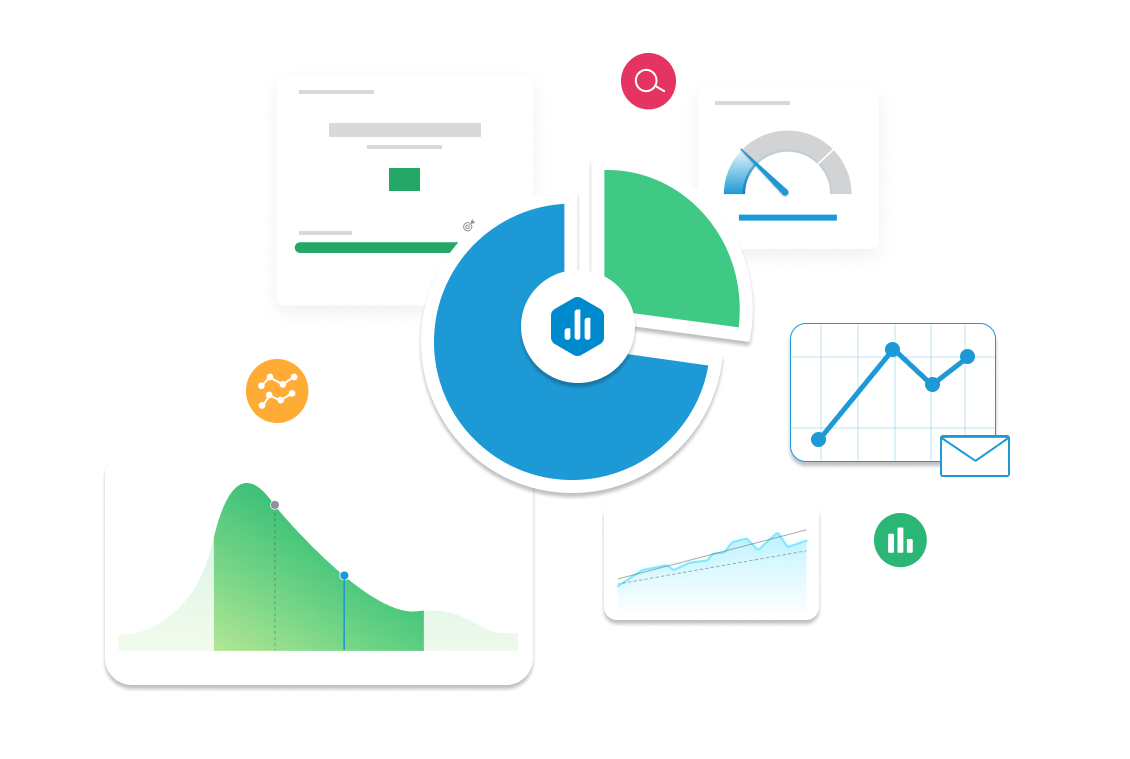Growth Rate
Discover how Growth Rate measures the percentage increase or decrease in a specific business metric over time. Learn how to track, calculate, and apply this KPI to monitor business health and drive strategic decisions.

| Category |
Marketing or Sales |
|---|---|
| Type |
Lagging or Leading Indicator – Depending on the metric measured (e.g., revenue, users, traffic), it reflects past or current momentum and forecasts future performance. |
| Calculation |
Growth Rate (%) = (Current Period Value−Previous Period Value / Previous Period Value) × 100 |
| Measure |
Tracks the percentage increase or decrease in a specific key metric over a set time frame (monthly, quarterly, annually), helping businesses assess progress and set future targets. |
| Data Sources: |
Google Analytics, HubSpot, Salesforce, Stripe, QuickBooks, Shopify, Mixpanel, Excel/Google Sheets (manual tracking). |
| Frequency |
Tracked monthly or quarterly to monitor trends, momentum, and business performance. |
Example target
Achieve 25% quarter-over-quarter user growth in Q3 by scaling paid acquisition and optimizing referral programs.
Example Reports Use Case
A Startup Growth Manager tracks Growth Rate to evaluate performance in areas like MRR, active users, or new customers. If growth slows, they analyze channel data and adjust tactics accordingly.
What is Growth Rate
Growth Rate is a simple but powerful metric that shows how quickly a business, product, or user base is expanding over time. It measures the percentage increase in a key metric—like revenue, customer count, or users—over a specific period, such as monthly, quarterly, or yearly. This KPI is important because it reflects the pace of progress and helps leaders understand whether the business is scaling effectively.
Growth Rate is often used to track momentum, identify trends, and guide strategic decisions. For example, a steady increase in customer growth may suggest strong product-market fit, while a slowdown might indicate the need for new strategies.
The basic formula is:
Growth Rate = ((Current Value – Previous Value) ÷ Previous Value) × 100
For example, if revenue grows from $50,000 to $60,000 in a month, the growth rate is 20%. This metric provides a foundation for measuring success and forecasting future performance.
How to Calculate Variants of Growth Rate
Growth Rate is usually calculated with this simple formula:
Growth Rate = ((Current Value – Previous Value) ÷ Previous Value) × 100
This shows the percentage increase (or decrease) over time. But there are several ways to apply it, depending on what you’re measuring:
1. Monthly vs. Yearly Growth Rate
Track short-term or long-term progress.
Example (Monthly):
-
January revenue: $40,000
-
February revenue: $50,000
((50,000 – 40,000) ÷ 40,000) × 100 = 25% growth
2. Growth Rate per Channel
See which marketing or sales channel drives the most growth (e.g., email, paid ads, referrals). This helps shift focus to top performers.
3. Growth Rate per Customer or User Segment
Track how different groups grow—like free vs. premium users—to guide product or pricing strategy.
Why Growth Rate Matters
Growth Rate is a key indicator of business momentum. It shows how quickly your company, revenue, customer base, or product usage is expanding over time. Tracking this KPI helps you understand whether your strategies are driving real progress—or if adjustments are needed.
This metric supports core goals like scaling, efficiency, and profitability. For example, if your customer base is growing 15% month-over-month but revenue isn’t keeping pace, it could signal pricing or retention issues. A strong growth rate across key areas—like revenue, users, or leads—usually means your marketing and sales efforts are working.
Marketers use growth rate to measure campaign success, sales teams monitor pipeline growth, and executives track it to guide investment and strategic planning. Monitoring growth regularly helps teams stay aligned on goals, spot trends early, and make data-driven decisions that keep the business moving forward. It’s a must-watch metric for any business aiming to scale sustainably.
Related KPIs to Growth Rate
Growth Rate connects with several key metrics that help explain why growth is happening and whether it’s sustainable.
Growth Rate vs. Churn Rate
Churn measures how many customers you lose over time. Even if your Growth Rate is positive, high churn can slow or cancel it out. For example, gaining 500 new users but losing 400 means weak net growth. Monitoring both helps you see the full picture.
Growth Rate vs. Customer Acquisition Cost (CAC)
A rising Growth Rate is great—but only if it’s cost-effective. If CAC increases faster than growth, it could hurt your profit margins. Low CAC with high growth is a strong sign of marketing efficiency.
Growth Rate vs. Customer Lifetime Value (LTV)
High growth is more valuable when paired with high LTV. If you’re growing fast but customers don’t stick around or spend much, long-term profitability may suffer.



